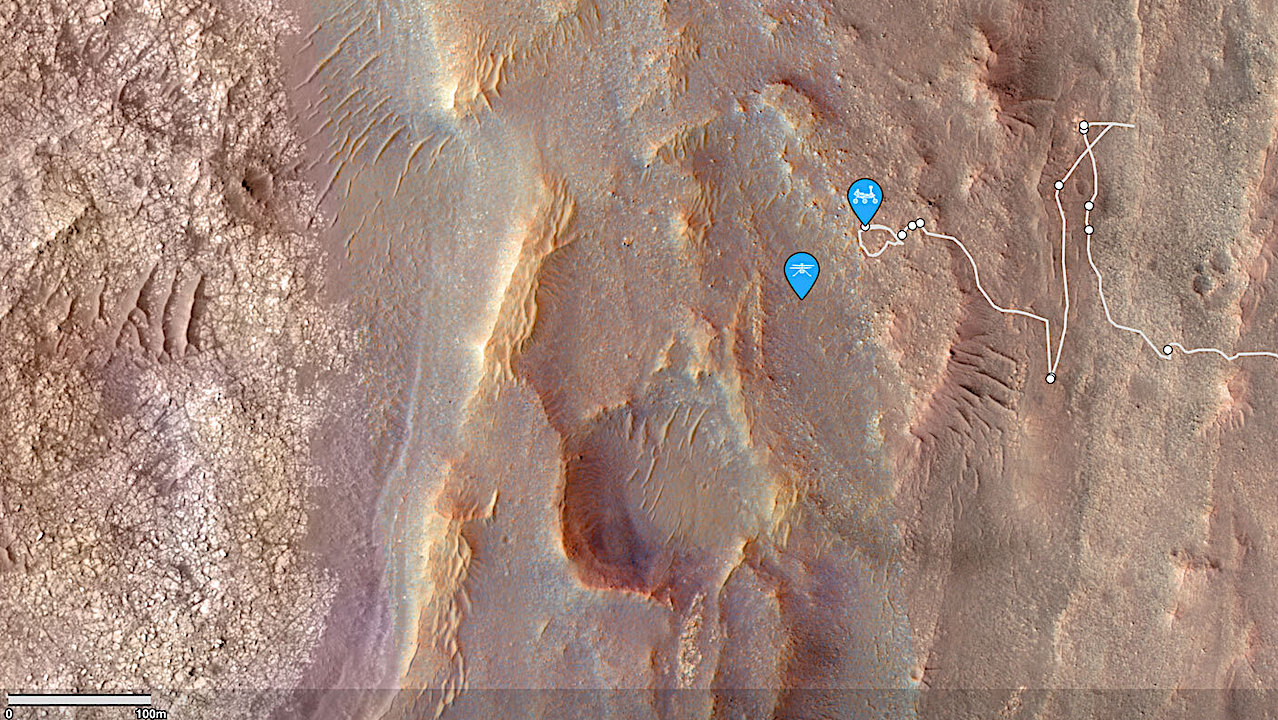
Location of Perseverance: This is an orbital view showing the approximate location of the Perseverance rover and the Ingenuity helicopter. The broken, light-colored material to the left of the panel corresponds to a margin carbonate unit ~400 m ahead of the rover. Credit: NASA/JPL-Caltech. Check out the interactive map
After more than two and a half years of driving and exploring, Persistence approaches the eagerly awaited goal: the Margin Carbonate Unit.
Mars 2020 scientists were buzzing with excitement last week as the Perseverance made its final approach toward a special rock unit that played a key role in selecting Jezero as the probe’s landing site. Located in a narrow band along the inner edge of Jezero’s western crater rim, this layer shows pronounced signatures of a mineral called carbonate.
On Earth, carbonates typically form in shallow shoals of freshwater or alkaline lakes. The Margin Carbonate Unit on Mars is hypothesized to be the same – 3 billion years ago, the waters of a lake in the Jezero Crater may have folded over its banks and deposited this carbonate layer. An alternative hypothesis is that carbonates form through inorganic carbonation, where silicate minerals (such as olivine) react with CO₂ to form carbonates.
Carbonates are intriguing for several reasons. First, carbonates can provide insights into Mars’ past atmosphere. These minerals form through a series of chemical reactions that begin when carbon dioxide (CO₂) from the atmosphere reacts with liquid water. Therefore, by studying the presence, abundance, and isotopic composition of these carbonates, our team can infer past atmospheric CO₂ levels on Mars and gain insights into its climate history.
Second, carbonate minerals are an excellent medium for preserving traces of ancient life, if present. When carbonates are deposited early in the rock-forming process, they can capture a snapshot of the environment in which they formed, including signs of microbial life.
On Earth, carbonate minerals form directly around microbial cells, binding them together and quickly turning them into fossils. This is very valuable because once an organism is encased in carbonate it can be preserved for a very long time. Another example of a carbonate fossil on Earth is stromatolites – layered structures formed by microbial colonies growing in mineral-rich water. Stromatolites represent some of the earliest records of life on Earth.
Although we still don’t know exactly how the rim rocks or the carbonates within them formed, the team is eager to drill into these rocks and unlock their secrets.
Astronomy

„Oddany rozwiązywacz problemów. Przyjazny hipsterom praktykant bekonu. Miłośnik kawy. Nieuleczalny introwertyk. Student.
